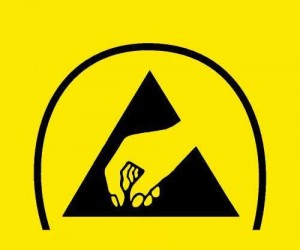
A direct lightning strike WILL damage your equipment, no doubt about it! But what about those tiny, almost unnoticeable surges of static referred to as electrostatic discharge (ESD)? Those little surges are trouble makers too! Here’s how to prevent electrostatic discharge from damaging your electronics
There are two types of damage that occur from ESD: The first is Catastrophic Damage which happens immediately and makes your equipment inoperable. If this happens the damage is typically at a semiconductor junction or solder joint. The good news about catastrophic damage is at least you know right away you have a problem.
The second, more insidious damage is Latent Damage. This is when the equipment sustains some damage but continues to function. It will likely eventually fail at which point you may not have any idea what caused the original damage. In either case, you are looking at unexpected and unwanted expenses. This could be for either replacement or industrial electronic repairs, not to mention the cost of down-time.
Some simple facts to know about ESD and how to protect your expensive electronic equipment:
- Typical sources of static electricity in a manufacturing setting include: Plastic or painted work surfaces; Flooring of vinyl tiles or sealed concrete; Synthetic fabric clothing; Packaging made of plastic or foam; Tools such as heat guns, blowers, CRTs, spray cleaners, and brushes; Chairs made of vinyl, finished wood or fiber-glass
- Digital circuits are more susceptible to electrostatic discharge than analog circuits.
- To check for static charge problems regularly use an electrostatic field meter.
- Watch humidity levels. When the relative humidity dips below 30% ESD is likely to occur.
- Work stations should use grounded static dissipative mats on work surfaces and have antistatic floor surfaces; avoid stainless steel work surfaces.
- Workers should use a grounded antistatic wrist straps, wear antistatic smocks and shoes, and use antistatic tools, carrier tape, and bags.
- Keep sources of static electricity at least three feet away from static-free work stations
- Using an air ionizer can help neutralize electrostatic discharges however this requires regular testing to make sure ions are properly balanced.
These are just some basics. ESD can cause a host of nightmare scenarios including gas, fuel vapor and coal dust explosions as well as failure of electronic devices such as life-saving medical equipment. You can see that controlling ESD is important for many reasons.
There are a number of companies that sell ESD protective garments and products as well as references such as American National Standards Institute (ANSI) and International Electrotechnical Commission (IEC) standards to help.
Fun fact: Did you know humans can hear static between 2,000 and 3,000 volts, feel static above 3,000 volts, and actually see static at 5,000 volts? Those staticy party balloons may be funny, but damaged equipment? Not so much. If it’s too late and you’ve already got damage, you may still have options.
Damaged industrial electronic equipment such as operator controls, power supplies, servo drives, and touch screens are often repairable. Repairs are usually more cost effective than purchasing new and sometimes, the ONLY way to go if you’ve got legacy equipment. Get your damaged electronic equipment evaluated by a qualified repair center to see if the damage is catastrophic or if repairs are possible. Evaluations should be free with no bench fees and the repair center should offer a warranty.
About the Author: ACS Industrial Services is an independent industrial electronic repair center providing repair services for most all manufacturers. Repair services include servo drive repairs, AC/DC drives, VFD drives, servo motors, encoders, printed circuit board repairs, monitors and touchscreens, PLCs, test equipment, and much more. Our customer service team is available to answer your questions and help solve your industrial electronic repair problems. Legacy equipment can be repaired! RUSH Service is available. You can reach them by calling 800-605-6419.
